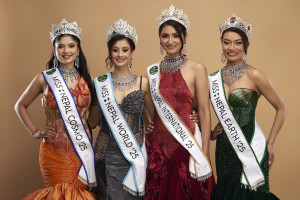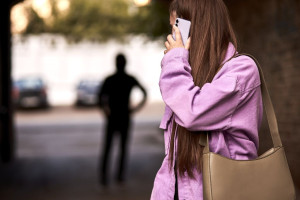Culture & Lifestyle
Navigating the complexities of alopecia areata
Dermatologist Elisa Bhattarai discusses the condition, its causes, and treatment options.
Aarya Chand
Hair fall is often brushed off as a minor cosmetic concern until it begins to fall out in patches, leaving behind visible bald spots and emotional scars. That’s the reality of alopecia areata.
Dr Elisa Bhattarai, a practising dermatologist at Nepal Skin Centre, who also specialises in venereology and leprosy at Bharosha Hospital, unpacks the complexities of alopecia areata. She explains what triggers this form of hair loss, how it presents itself, and the available treatment options.
What is alopecia areata, and how does it differ from normal alopecia?
Alopecia areata is an autoimmune condition that leads to hair loss on the scalp and other hair-bearing areas such as the beard, eyebrows, and eyelashes, typically without any visible signs of inflammation. It is among the most frequently diagnosed causes of hair loss by dermatologists. Although it can affect individuals of any age, it most commonly appears between the ages of 30 and 60 and affects both men and women equally. Because several other conditions, such as tinea capitis, trichotillomania, secondary syphilis, traction alopecia, and cicatricial alopecia; can resemble alopecia areata, accurate diagnosis is essential for proper treatment.
What are the most common causes or triggers of this condition?
Alopecia areata is a disorder that disrupts the normal hair growth cycle. Typically, hair follicles progress through three phases: anagen (growth), catagen (transitional), and telogen (resting). In healthy individuals, hair in the telogen phase sheds only after a new anagen phase begins. However, in alopecia areata, hair falls out prematurely before the anagen phase starts, leaving the follicle empty. This empty state is referred to as the kenogen phase.

The underlying cause of this condition is an autoimmune response, where the body’s immune system—particularly T cells—mistakenly targets antigens in the hair follicles, leading to their destruction.
Common triggers include stress, diabetes mellitus, thyroid imbalances, vitamin deficiencies, viral infections, and in some cases, certain vaccinations.
How can someone tell the early signs?
It is generally a painless condition and is often first noticed by family members or barbers rather than the individual themselves. The hair loss typically appears in circular manners, which may be singular or multiple patches. In active cases, gently pulling 50 to 60 hairs from the edges of a patch can result in about 10% of them coming out, indicating ongoing hair follicle activity.
Is alopecia areata related to skincare or scalp health?
Alopecia areata is an immune-mediated condition with a genetic component, often running in families. It is not caused by poor scalp hygiene but can be triggered or worsened by factors like nutritional deficiencies, viral infections, or certain vaccinations. The immune system mistakenly attacks hair follicles, not the scalp itself, so a clean scalp won’t prevent the condition, but poor scalp health can interfere with treatment and regrowth.
While inflammation isn’t the main cause, localised immune-related inflammation around follicles contributes to hair loss. Unlike common scalp conditions like psoriasis, this inflammation is specific to alopecia areata. Avoiding harsh chemicals may reduce flare-ups and support healing.
Secondary scalp issues like dandruff or fungal infections can further weaken follicles. A clean, moisturised scalp creates a better environment for regrowth during treatment. Through massage, diet, and hydration, healthy blood flow and nutrition also help follicles recover. While good scalp care won’t stop autoimmunity, it supports the healing and hair regrowth process.
What skincare or scalp care practices can help support someone dealing with the condition?
When managing alopecia areata, it’s important to incorporate gentle scalp care practices to support treatment and overall follicle health. Using sulfate-free shampoos can help minimise irritation, while avoiding tight hairstyles or excessive heat prevents unnecessary stress on the hair follicles. Maintaining good hygiene is essential to prevent infections that could further hinder regrowth. Additionally, incorporating regular scalp massages can improve blood circulation to the hair follicles, promoting a healthier environment for hair to regrow.
Are there treatments available, and how effective are they?
Yes, effective treatments are available for alopecia areata, including topical, oral, and injection-based options. These include topical corticosteroids, intralesional steroid injections (such as triamcinolone), and topical immunotherapy. Minoxidil is also used to encourage hair regrowth, while JAK inhibitors like tofacitinib have shown promise. Additionally, managing stress and addressing autoimmune triggers through lifestyle changes can support treatment. In most cases, these treatments are effective, but only about 1 percent to 2 percent of individuals with alopecia areata progress to more severe forms, such as alopecia totalis or alopecia universalis.
What advice would you give someone emotionally struggling with hair loss from alopecia areata?
Alopecia areata can be emotionally challenging, as stress and anxiety often trigger or worsen the condition. The stigma and burden of hair loss can lead to increased anxiety, and emotional stress has been linked to immune system reactions that may exacerbate hair loss. Support groups help reduce isolation, while therapy can address low self-esteem and body image concerns.
Mindfulness practices like yoga or meditation can manage stress-related flare-ups. Styling options such as wigs or scarves may boost confidence, and journaling or affirmations can build emotional resilience. Most importantly, consult a dermatologist for proven treatments and avoid unverified remedies that may worsen your condition.




 22.08°C Kathmandu
22.08°C Kathmandu















